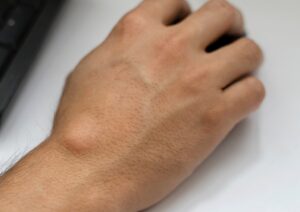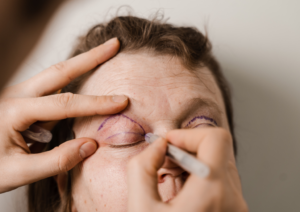
Understanding Trigger Finger: Causes, Symptoms, and Treatment Options
Trigger finger, also called stenosing tenosynovitis, is a condition that affects the tendons controlling finger movement. It can lead to stiffness, pain and locking of the affected finger. Understanding what causes trigger finger, how it develops, and the treatment options available can help patients manage symptoms effectively and make informed decisions about their hand health.
An Overview of Trigger Finger
Trigger finger occurs when the tendons that bend the fingers do not glide smoothly through the protective sheaths around them. This can create a catching or locking sensation when moving the finger, sometimes accompanied by pain or swelling at the base of the finger. Although it can develop gradually, recognising the symptoms early allows for timely treatment and helps maintain normal hand function.
Inside the Hand: Why Trigger Finger Occurs
To understand trigger finger, it is important to know the basic structures involved in finger movement. The fingers rely on tendons, pulleys, and sheaths that work together to allow smooth bending and straightening.
Tendons, Pulleys, and Sheaths: How Finger Movement Works
- Tendons connect the muscles in the forearm to the finger bones, enabling movement.
- Sheaths are protective tunnels that allow tendons to glide without friction.
- Pulleys hold the tendons close to the bones, maintaining finger stability.
The Role of the A1 Pulley in Trigger Finger
The A1 pulley is located at the base of each finger. In trigger finger, the tendon may not pass smoothly through this pulley, which can cause catching, popping, or locking of the finger. This is why the A1 pulley is often the focus of surgical treatment when conservative methods do not relieve symptoms.
Causes of Trigger Finger
Trigger finger can develop due to a combination of mechanical, medical, and lifestyle factors.
- Repetitive gripping or hand movements
- Inflammation of the tendon sheath
- Age-related tendon changes
- Underlying medical conditions
Medical Conditions Increasing Risk
- Diabetes increases the likelihood of tendon inflammation
- Rheumatoid arthritis can affect joint and tendon health
- Gout may contribute to tendon irritation
Occupational Risks and Lifestyle Factors
- Repetitive tasks involving the fingers, such as assembly line work or playing musical instruments.
- Manual labour requiring frequent hand use, which may strain tendons over time.
Recognising Trigger Finger Symptoms
The symptoms of trigger finger can vary in severity, but often include;
- Finger stiffness, particularly in the morning
- Clicking or popping when bending or straightening the finger
- Pain at the base of the affected finger
- Locking of the finger in a bent position, sometimes requiring manual straightening
Symptom Progression and Severity Levels
- Mild: Occasional stiffness or minor clicking
- Moderate: Persistent pain and frequent catching of the finger
- Severe: Finger locks in a bent position, significantly affecting hand function
Diagnosing Trigger Finger
Diagnosis is usually performed by a GP or hand specialist and involves:
- Medical history: Discussion of symptoms, activities, and any underlying conditions
- Physical examination: Checking for tenderness, stiffness, and locking of the finger
- Imaging (rare): X-rays or ultrasound may be used if another condition is suspected
Treatment Options for Trigger Finger
Treatment depends on the severity of symptoms and the response to non-surgical methods. Approaches typically start with conservative care and may progress to surgery if other options are insufficient.
Non-Surgical Treatments
- Activity modification: Reducing repetitive hand movements
- Splinting: Wearing a splint to limit finger movement and allow healing
- Anti-inflammatory medications: Reducing pain and swelling
- Corticosteroid injections: Reducing inflammation in the tendon sheath
Surgical Treatment: Trigger Finger Release
If conservative treatments do not provide relief, surgery may be considered:
- The procedure involves releasing the A1 pulley to allow the tendon to move freely.
- It is usually performed under local anaesthetic in a day surgery setting.
- Most patients gradually regain normal finger function with proper post-operative care.
Complications of Untreated Trigger Finger and Prognosis
Without treatment, trigger finger can lead to:
- Constant stiffness or reduced finger movement
- Finger deformity in severe cases
With timely diagnosis and management, most patients recover well and regain normal hand function. Early intervention typically results in better outcomes and reduces the risk of long-term complications.
Frequently Asked Questions
How long does recovery take after surgery?
Recovery varies, but most patients regain finger function within a few weeks with gradual exercises.
Can trigger finger resolve without treatment?
Mild cases may get better with rest, splinting, or activity modification.
Can trigger finger come back after treatment?
Recurrence is possible, particularly in patients with underlying medical conditions.
Will trigger finger affect grip strength permanently?
If treated early, grip strength typically returns to normal.
How does smoking or nutrition influence healing?
Smoking can slow healing, while a balanced diet supports tissue repair.
Our Surgeons
Recent Post

What is Melanoma? Causes, Symptoms, and Treatment Options

Types of Reconstructive Surgery and Their Role in Recovery After Injury

Understanding Trigger Finger: Causes, Symptoms, and Treatment Options

Ganglion Cyst: Symptoms, Causes & Diagnosis











